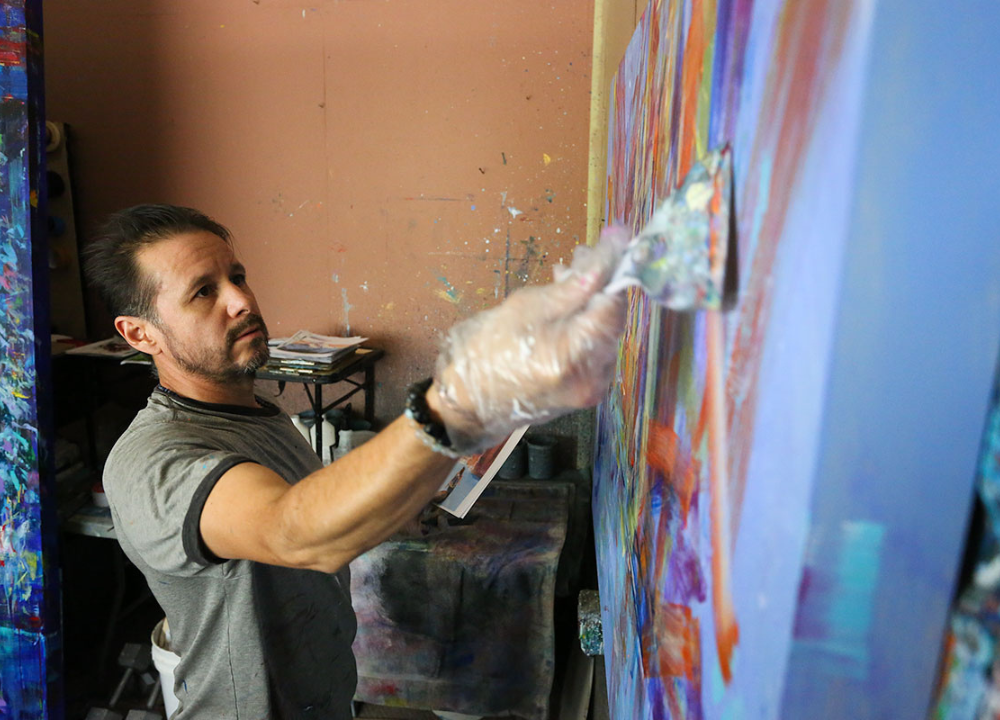You don’t need fancy tools or years of experience to see real improvement. By changing how you approach your sketching, you can unlock new levels of creativity and skill. Keep reading to discover 5 sketching habits that will instantly boost your art and make every stroke count.
Daily Sketching Routine
Developing a daily sketching routine is one of the most effective ways to improve your art quickly. Sketching every day builds muscle memory, sharpens observation skills, and boosts creativity. This habit helps you stay connected with your art and makes progress feel natural and steady.
Setting A Consistent Time
Choosing a fixed time for your sketching practice creates a strong habit. Your brain starts to expect this activity daily, making it easier to stay motivated. Pick a time when you feel relaxed and focused. Many artists prefer early mornings or late evenings, but any time that fits your schedule works well.
Benefits of a consistent time:
- Builds discipline: You train yourself to draw without excuses.
- Improves focus: Your mind prepares for creativity at the same hour.
- Reduces procrastination: You avoid delaying your practice.
Here is a simple table to help you decide the best time for sketching:
| Time of Day | Advantages | Considerations |
|---|---|---|
| Morning | Fresh mind, quiet environment | Must wake up earlier, need warm-up |
| Afternoon | Good energy, natural light | Possible distractions, busy schedule |
| Evening | Relaxed mood, unwind from day | May feel tired, need good lighting |
Start with 10 to 15 minutes daily at your chosen time. Gradually increase as you get comfortable. Use a timer or alarm to remind yourself. Treat this time as important, like a meeting you cannot miss.
Choosing Simple Subjects
Picking easy subjects helps maintain your daily sketching habit. Simple objects reduce frustration and encourage quick, confident strokes. This approach builds your skills step-by-step without overwhelming you.
Examples of simple subjects:
- Everyday items like a cup, keys, or a book
- Basic shapes such as circles, squares, or triangles
- Plants, leaves, or simple flowers
- Parts of your environment like chairs or lamps
Benefits of starting simple:
- Focus on fundamentals: Shapes, lines, and shading.
- Build confidence: Finishing sketches feels rewarding.
- Encourage creativity: Explore styles without pressure.
Use this checklist to choose subjects for daily sketching:
- Is it easy to observe and draw?
- Can it be completed in 10-15 minutes?
- Does it help practice basic shapes or textures?
- Is it interesting enough to keep you engaged?
Simple subjects make daily sketching less stressful. They keep your practice enjoyable and consistent. Over time, increase complexity as your skills improve.
Using References Effectively
Using references effectively is a key habit that can greatly improve your sketching skills. References help you understand shapes, proportions, and details better. They give your drawings accuracy and depth. Learning how to find good references and use them well will make your art look more realistic and complete.
Finding Reliable Sources
Choosing the right references is the first step to better sketches. Reliable sources provide clear and accurate images or real-life views. This helps you draw with confidence and avoid mistakes. Here are some tips for finding good references:
- Use high-quality photos: Look for sharp and well-lit images. Blurry photos make details hard to see.
- Choose multiple angles: Find pictures of the same subject from different views. This helps understand form and volume.
- Prefer real-life observation: Sketch from objects around you or visit places to study subjects firsthand.
- Check trusted websites: Use art libraries, museums, or educational sites for reliable pictures.
- Avoid copyrighted images: Use free stock photo sites or take your own photos to respect creators.
Below is a simple table comparing common reference sources:
| Source Type | Advantages | Disadvantages |
|---|---|---|
| Photographs | Easy to access, detailed, various angles | May lack depth, flat lighting |
| Real Life | True colors, depth, perspective | Time-consuming, needs setup |
| 3D Models | Rotate and zoom, study form | Can look artificial, less natural |
Try combining these sources for the best results. Reliable references make your sketches more accurate and help you build confidence.
Incorporating Observation Skills
Using references is not just about copying. It is about training your eyes to see details and shapes clearly. Good observation skills help you notice the small things that make a sketch realistic. Here are ways to improve your observation while using references:
- Focus on basic shapes: Break down complex objects into circles, squares, and triangles.
- Look for light and shadow: See how light changes the shape and depth of objects.
- Notice proportions: Compare sizes and distances between parts of your subject.
- Observe textures: Study how surfaces look, like rough bark or smooth skin.
- Practice quick sketches: Draw fast to capture the essence without details.
Use this checklist to guide your observation:
- What shapes form the subject?
- Where is the light coming from?
- How do shadows fall?
- Are the proportions correct?
- What textures are visible?
Improving observation helps you add life and accuracy to sketches. It also reduces dependence on references over time. Train your eyes daily, and your art will grow stronger and more confident.
Experimenting With Different Tools
Experimenting with different tools is a simple way to improve your sketching skills quickly. Using new pencils, pens, and paper can change how your art feels and looks. It helps you find the best materials that suit your style. Trying different tools also keeps your practice fresh and exciting.
Trying Various Pencils And Pens
Using different pencils and pens lets you create a wide range of lines and shades. Each tool has unique qualities that affect your sketch’s look and style. For example, soft pencils make dark, smooth lines, while hard pencils produce lighter, finer marks.
- Graphite pencils: Grades range from 9H (hard) to 9B (soft). Hard pencils are good for light details. Soft pencils work well for shading and bold lines.
- Mechanical pencils: Offer consistent thin lines. Great for precise work and fine details.
- Ink pens: Come in many types like ballpoint, gel, and brush pens. They create sharp, permanent lines and add contrast.
- Charcoal pencils: Make rich, dark marks. They are perfect for dramatic shading and texture.
Testing these tools helps you understand their strengths. Use the table below to compare common pencil and pen types:
| Tool | Line Quality | Best For | Ease of Use |
|---|---|---|---|
| Graphite (Soft) | Dark, smooth | Shading, bold lines | Medium |
| Graphite (Hard) | Light, fine | Light details, sketch outlines | Easy |
| Mechanical Pencil | Thin, consistent | Details, technical drawing | Easy |
| Ink Pen (Ballpoint) | Sharp, smooth | Line art, contrast | Medium |
| Charcoal Pencil | Rich, textured | Shading, expressive marks | Hard |
Try mixing tools in one sketch. Use a soft pencil for shading and an ink pen for outlines. This method adds depth and interest to your art.
Exploring Paper Types
Paper type changes how your pencil or pen interacts with the surface. The texture, weight, and color of paper impact your sketch quality. Experimenting with different papers helps you find what works best for your style and tools.
- Smooth paper: Has a fine surface. Ideal for detailed pencil and pen work. Lines appear crisp and clean.
- Textured paper: Has a rough surface. Great for charcoal, graphite, and pastels. Adds natural texture to sketches.
- Heavyweight paper: Thick and durable. Supports wet media like ink and markers without warping.
- Colored paper: Adds mood and tone to sketches. Works well with white pencils or gel pens for highlights.
Here is a quick comparison of paper types commonly used for sketching:
| Paper Type | Texture | Best For | Weight (gsm) |
|---|---|---|---|
| Hot Pressed | Very smooth | Detailed pencil, ink | 90-300 |
| Cold Pressed | Medium texture | Mixed media, charcoal | 100-300 |
| Rough | Coarse texture | Charcoal, pastels | 120-350 |
| Sketch Paper | Smooth to medium | General drawing | 50-90 |
Try different papers side by side. Notice how your lines and shading change. Keep notes on your favorites. This helps you pick the right paper for each project.
Focusing On Gesture Drawing
Focusing on gesture drawing is a powerful habit for any artist. It teaches how to capture the essence and movement of a subject fast. Gesture drawing is not about details. It is about the action, flow, and feeling behind the pose. This habit helps artists loosen up their hands and eyes, making their sketches lively and natural.
Capturing Movement Quickly
Gesture drawing is all about speed. The goal is to capture the main action or pose in a short time. This keeps your sketches fresh and full of life. Quick drawing forces you to focus on the big shapes and motion instead of small details. You learn to see the subject’s energy.
Try these tips to improve how you capture movement:
- Use short timed sessions: Draw poses in 30 seconds to 2 minutes.
- Focus on the flow: Notice how the body moves and bends.
- Ignore details: Skip faces, fingers, or clothes at first.
- Draw with your whole arm: Avoid moving only your wrist.
- Repeat often: The more you practice, the faster you get.
Here is a simple table showing benefits of quick gesture drawing:
| Benefit | Effect on Art |
|---|---|
| Faster observation | Better understanding of poses |
| Loose lines | More natural, lively sketches |
| Focus on action | Expressive and dynamic figures |
Capturing movement quickly helps avoid stiffness in drawings. It trains your brain to see the subject’s energy fast. This skill improves all types of art, from cartoons to realistic figures.
Improving Line Confidence
Line confidence means drawing lines with purpose and strength. Gesture drawing encourages artists to draw bold, clear strokes. Instead of sketching lightly and erasing, you learn to trust your hand. This builds confidence and speed.
Ways to improve line confidence:
- Practice single strokes: Draw each line once without hesitation.
- Use continuous lines: Avoid lifting your pen often.
- Draw large shapes first: Use broad lines before adding smaller ones.
- Limit sketching time: Short sessions force you to be decisive.
- Draw regularly: Daily practice builds muscle memory.
Confident lines give sketches energy. They show intention and movement. Light, shaky lines can make art look unfinished or weak. Bold lines create strong shapes and clearer forms.
Reviewing And Reflecting On Sketches
One of the most powerful sketching habits is reviewing and reflecting on your sketches. This habit helps you see your strengths and weaknesses clearly. It also guides you on what to practice next. Taking time to look back at your work makes your learning faster and more focused.
Identifying Areas For Improvement
Reviewing sketches allows you to spot specific parts that need work. It is hard to improve if you do not know what to fix. Look at your sketches with a critical eye. Ask questions like:
- Are the shapes accurate?
- Is the perspective correct?
- Are the proportions balanced?
- Is the shading adding depth?
Write down or highlight the areas that seem off. It helps to keep a small notebook or digital file with notes on what you find. You might notice repeated mistakes, such as:
| Common Issues | How to Improve |
|---|---|
| Uneven proportions | Practice measuring with your pencil or grid method |
| Flat shading | Study light and shadow; use different pressure with your pencil |
| Wrong perspective | Draw simple shapes in perspective first, like boxes and cylinders |
Try to focus on fixing one or two issues at a time. This focused practice leads to faster improvement. Remember, identifying problems is the first step toward better art.
Tracking Progress Over Time
Keeping track of your sketches shows how much you improve. It motivates you to keep drawing. Create a system to save your sketches regularly. You can use a sketchbook, folder, or app. Date each sketch to see changes over weeks or months.
Here are simple ways to track progress:
- Sketch Journals: A physical book where you draw daily or weekly.
- Digital Folders: Save scans or photos of your work with dates.
- Before and After: Compare old and new sketches side by side.
Tracking progress helps you notice patterns:
- Which techniques improve fastest
- What subjects you enjoy sketching most
- Areas still needing work
Try this simple progress chart:
| Date | Subject | Focus Area | Notes on Improvement |
|---|---|---|---|
| Jan 1, 2024 | Portrait | Eyes and nose | Proportions off; need more practice |
| Feb 1, 2024 | Portrait | Eyes and nose | Better shape; still need smoother shading |
Review your progress every month. Celebrate small wins. Adjust your practice focus based on what you see. This habit builds confidence and skill steadily.




